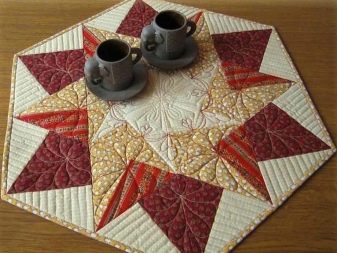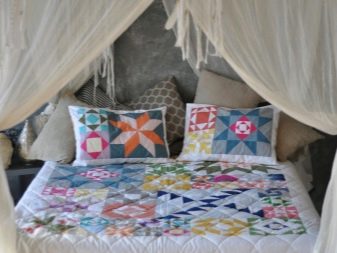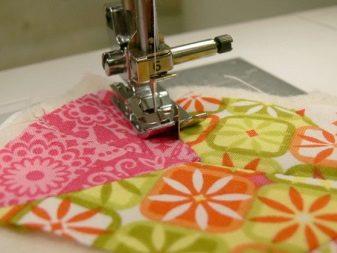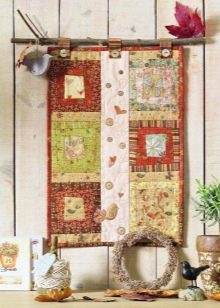Many needlewomen love to sew, but when working with fabrics, usually there are many rags that are a pity to throw out. It turns out that with them you can realize interesting creative ideas, adding a little material and your imagination. Patchwork can be interesting for both professional seamstresses and beginners who want to diversify their everyday life. What you need to create a beautiful blanket and other interesting handmade products, we learn in this article.




What is required?
Using patchwork in the technique of “cutting” you can create unique things without leaving your home. This can be both banal kitchen potholders, and more complex products, including pillows, small rugs, as well as whole patchwork walls and blankets. In general, using this technique you can create anything, the main thing is to have enough patience for this.


Need for sewing.
- Sewing machine (although you can also sew small items or certain parts manually).
- Knife or scissors for cutting fabrics. It is advisable to purchase a special roller knife, which is used directly for patchwork. Such a knife necessarily needs a substrate on which the fabric is cut. On a special substrate there are all measurements for the correct marking on fabrics.
- Ruler, needles, pins;
- Pencil or chalk to create marks on the fabric.
For patchwork, you can buy a new fabric or use leftovers if they are enough in quantity for the desired product. Threads can be purchased very different.


How to make?
Many people think that patchwork is very simple, you just need to cut even shreds and sew them together.Actually this is not true. Since the patchwork technique belongs to the patchwork, in order to master it, you should start small.
The patchwork technique in the “cutter” technique involves stitching many patchwork elements into a single unit, then collecting the product itself, installing it on a substrate (lining), creating a border and screed. For example, on the creation of a bedspread on average about a hundred shreds will be required.
Today there are a variety of ready-made schemes and master classes, which are especially easy to navigate in the technique of "cutting".


Consider a master class that uses blocks of squares of fabric. The finished work can be used as a rug, the basis for a pillowcase or linen on the wall, depending on the size of the desired product.
To work, prepare:
- the necessary equipment mentioned above, including scissors and a roller knife;
- the remnants of a variety of tissues and, of course, you need to have a little patience.

Consider the work step by step.
- Squares of tissue should be cut in advance. It is preferable to choose multi-colored fabrics with patterns that differ from each other.
- After cutting the squares, they should first be laid out in the desired pattern. For example, they can be staggered or randomly. Of the nine pre-cut squares, you can get one big one.
- Next, we sew the product, letting the seam no more than 0.8 cm.
- On the columns (diagonally) of the product, it is desirable to iron the fabric allowances, it will be more comfortable to work, but horizontally, on the contrary, iron.
- The result was a preliminary product, which can then be cut again into equal parts horizontally and vertically. As a result, four identical squares should turn out again, which can be supplemented with other squares from a fabric of a different color, and then sew again. So, you can do it several times to obtain the desired size of the product, as well as to create a unique pattern.
When adding a border to the resulting product, you can easily make a pillowcase, and when you add a few more blocks in a row, you can get an excellent tablecloth for a summer residence.






In exactly the same way, you can stitch not only squares, but also strips, using general recommendations. From the strips, excellent bedspreads are obtained. Often, needlewomen from squares receive triangles.
Of the squares and triangles, in the presence of basic sewing and patchwork skills, fast quilts can be sewn. Quilt is a product that is sewn from different pieces of fabric of the same width or different.


Beautiful examples
- A variety of wall decorations in the interior look very advantageous from patchwork. With the right combination of colors and prints of fabrics, original products are obtained with a minimum of effort.



- A variety of things for children in a flower or polka dots look interesting in the “cutting” technique. It can be pillowcases and rugs.



- Also popular are products that imitate a beautiful and original ornament.


A patchwork quilting masterclass is presented in the video below.










